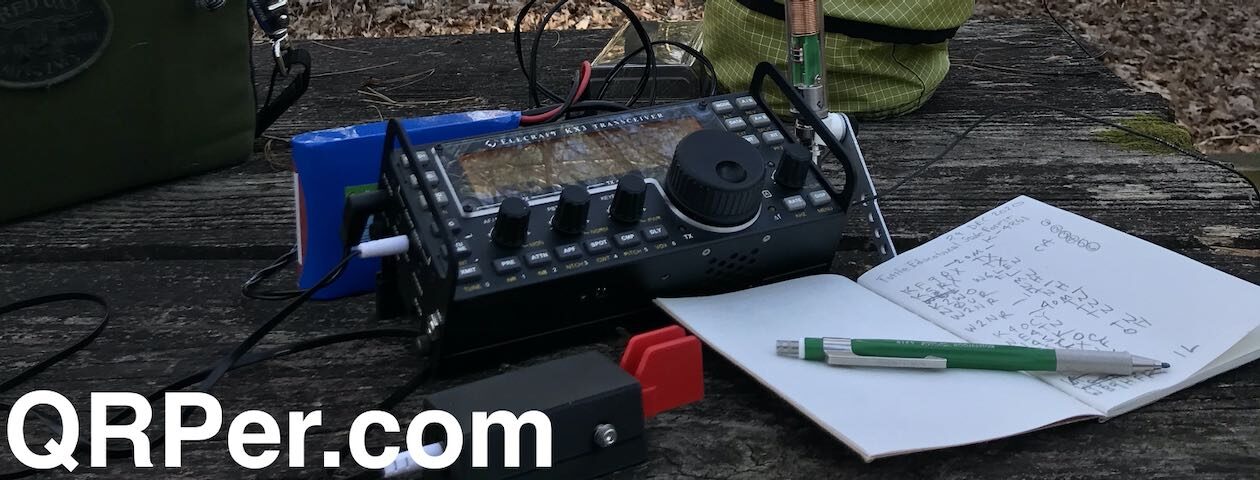By Teri KO4WFP
After six months devoid of POTA/camping trips, it was time for Daisy and I to hit the road, this time returning to southwest Georgia. There are parks on that side of the state I want to activate but the travel time necessitates a longer stay. My son has two weeks off from school during winter break, plenty of time for such a trip.
After looking at the state parks with campgrounds on that side of Georgia, I settled on Kolomoki Mounds State Park partially because of how the campground looked online but also due to the availability of parks to activate nearby. The POTA map showed six parks to the north, four to the east, and five to the south, all within an hour-and-a-half drive, plenty of parks from which to choose.

Wednesday, January 1st, I loaded up the car and Daisy and I began our journey through rural Georgia to our first park – Elmodel Wildlife Management Area (WMA).
I absolutely love driving through rural Georgia! The roads wind me through little towns with imposing courthouses and kitschy businesses, past water towers and pecan orchards slumbering until spring. While the view may not offer the stunning vistas associated with national parks or glistening metropolitan skylines, it has its own magic, one in which I delight. My car was purring along the road and so was I.




After nearly four hours in the car, we reached Elmodel WMA (US-3748). The park is in the middle of nowhere (as many WMAs are) but the sign and information kiosk are easily spotted from the road. Rather than set up in that open area, I opted to drive a little way into the park as I often like to do.


As I had yet to set up our campsite for the night and sunset was only three hours away, there was not time to dally. I opted for the Chelengance MC-750. I figured I’d stick to 20 meters so there’d be no having to fiddle with the vertical for changing bands.


There is almost always something unexpected during an activation. Today both of my paddles gave me difficulty. The VK3IL-design paddle would not work correctly. When plugged in, it made non-stop dahs. As a backup, I brought the mini palm paddle that was given to me. This paddle, too, acted up when the dit paddle would randomly stop working. (I think the connector on the back of the key is the problem.) ARGH! But that paddle worked 98% of the time and would have to do.
(On a side note – now that I have invested in a wonderful bug – the Frattini Magnetic Evolution bug – and cootie – the W1SFR Titan – it is time to get a good quality portable paddle. As of the writing of this article, I’ve ordered a BamaTech III paddle and await its arrival near the end of January.)

It was not long after spotting myself (Yay! There was cell service at this WMA!) that John AC9OT answered my CQ.
Operating QRP, I expect my signal reports to hover between 579 and 559. However, today’s reports were not great – 539, 449, 339. Maybe the ionosphere was still unsettled after the prior day’s CME. Unsettled or not, I managed to garner eleven contacts including one from Tim K5OHY, a member of my current Comprehensive ICR course that I am coaching for CW Innovations with Brian K3ES. (Thanks Tim!)

After 11 contacts, I called QRT, packed up my equipment, and headed for Kolomoki Mounds State Park. My campsite was better than what I expected – lakeside with the sun setting behind the trees. I ate a simple supper and marveled at how blessed I am to have these experiences.



As I snuggled into my sleeping bag in the frigid evening air, where would I head tomorrow? North? South? Or East? Stay tuned…
Equipment Used
[Note: All Amazon, CW Morse, ABR, Chelegance, eBay, and Radioddity links are affiliate links that support QRPer.com at no cost to you.]
-
- Elecraft KX2
- Chelegance MC-750
- Tripod for Chelegance MC-750
- Palm mini paddle (no longer manufactured)
- Tufteln RG-316 Coax
- Tufteln Knee Board
- Helinox Chair Zero High-back








































 I also added a USB port to the battery pack because the (tr)uSDX can operate with around 0,5W directly from USB and that’s a great way to test for SWR and fine tune the antenna without stressing the finals.
I also added a USB port to the battery pack because the (tr)uSDX can operate with around 0,5W directly from USB and that’s a great way to test for SWR and fine tune the antenna without stressing the finals.






























